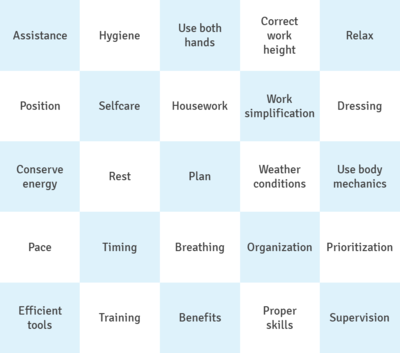Job simplification
| Job simplification |
|---|
| See also |
Job simplification (or in other words job engineering) aims to increase work efficiency by reducing the complexity and range of tasks that one person has to do. The said conception is based on principles that are drawn from scientific management and industrial engineering. According to this approach, tasks are designed to be very easy, repetitive and standardized. That is why the employee has definitely more time to concentrate on completing the assigned task (R. L. Daft, D. Marcic 2010, p. 419).
The purpose of job simplification is to maximize output and minimize labour input all at once. Consequently, it sometimes requires the implementation of necessary technology in order to achieve expected results (J. Martin 2005, p. 531).
Division of tasks
In this approach, employees complete tasks according to the following scheme:
- task 1 ---> employee A,
- task 2 ---> employee B,
- task 3 ---> employee C,
- task 4 ---> employee D,
- task 5 ---> employee E,
- and so on (R. L. Daft, D. Marcic 2010, p. 419).
Advantages of job simplification
The main advantage of job simplification involves increased operating efficiency. This growth is possible to achieve because simplified jobs are connected with specialization that, in turn, helps to increase productivity. Another advantage is that low-skilled employees require little training to complete assigned tasks and that is why they can be transferred from one job to another. What is more, it is also beneficial for the company's management that can supervise easily the productivity of these simplified jobs. Other potential advantages may include low-cost labour and controlled production quantity (P. Chelladurai 2006, p. 139).
Disadvantages of job simplification
The biggest disadvantage of this approach is that job simplification may cause the job to become more monotonous and boring. This, in turn, can lead to a number of negative employees' reactions, including sabotage, absenteeism, and unionization. Consequently, even when workers attend work, they may not put their best efforts to perform tasks and they also may be prone to making more mistakes. The other disadvantages can be loss of efficiency due to low-quality work and as well the necessity to pay high wages to get employees to do unattractive and repetitive jobs (P. Chelladurai 2006, p. 139).
Where job simplification can be used?
This approach is characteristic of production and assembly line jobs. Nevertheless, it can also be seen in administrative or educational jobs. For instance, in accounting departments, employees' duty is to do specified activities, such as opening the post, sorting the invoices or entering the data into a computer system (J. Martin 2005, pp. 531-532).
References
- Chelladurai P. (2006), Human Resource Management in Sport and Recreation, Human Kinetics, Champaign, pp. 138-139
- Daft R. L. (2008), New Era of Management, Thomson Learning, Mason, p. 640
- Daft R. L., Marcic D. (2010), Understanding Management, South-Western Cengage Learning, Mason, p. 419
- Dysvik A., Kuvaas B. (2011), Intrinsic motivation as a moderator on the relationship between perceived job autonomy and work performance, "European Journal of Work and Organizational Psychology", vol. 20, no. 3
- French R., Rayner C., Rees G., Rumbles S. (2011), Organizational Behaviour, John Wiley & Sons, New York, pp. 244-245
- Martin J. (2005), Organizational Behaviour and Management, Thomson Learning, Mason, pp. 531-532
Author: Klaudia Nycz
